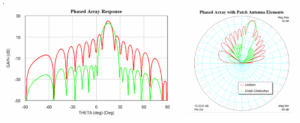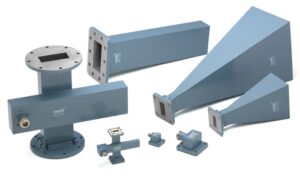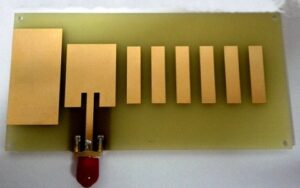Table of Contents
Overview of the Magic Tee as a Microwave Component
The Magic Tee, or the “E-H Tee”, represents a critical element in the microwave engineering. Its unique design and operational principles allow the device to take every possible position, including that of a power combiner, divider, and a phase shifter. The current paper will begin with a brief review of the historical development and invention of the Magic Tee.
Historical Development and Inventors
This device was first invented in the middle of the 20 th century, a time of rapid technological advancement in the microwave area. The Magic Tee was invented by the collaborative efforts of a group of engineers, trying to develop a novel technology to facilitate handling with microwave signals inside the waveguides. Such work was inspired by the development and modification of radar and communication systems, which required more functional and responsive components to support the demands of the time.
Basic Structure and Waveguide Configuration
Structure and Dimensions
Basically, the structure of any Magic Tee confronts a symmetrical cross-shaped design and waveguide configuration. In this configuration, a Magic Tee is composed of two principal arms or inductors, the so-called E-arm and H-arm, and two loadings, the common arm or E-load, open to both the E and H-arms, and the isolated arm or H-load, open to the E-arm only. Also, the precise dimensions of a Magic Tee, as well as its width along, width across, and preferred length, play a critical role in its performance. To accelerator minimum loss and weigh that can be handled by the power loss, the varying dimensions are calculated for the waveguide dimensions, which are the most typical 22.86 mm by 10.16 mm at X-band. The device is made of either aluminum or brass, designed to provide the precise electrical characteristics. The quality and precision of the device also allow it to handle power of several kilowatts altogether weighing over 95%.
Material and Quality
Materials, or a Magic Tee should be developed to provide the exact electrical properties required for the device and be resistant to heavy use of durable material, including aluminum and brass. With the help of precision manufacturing, such materials allow the Magic Tees to handle power up to several kilowatts and provide overall efficiency of above 95%.
Distinctive Operational Principles
Power Division and Combination
Magic Tee’s distinct feature is that this device can equally split an input signal of an optical frequency into two separate signals and combine a radio frequency signal from the E-arm and the H-arm without interfering with each other. This device is highly balanced, allowing signal division or combination with a minimal insertion loss of no more than 0.5 dB. The operational principles of a Magic Tee that are essential to its use are phase shifting and isolation. The first principle implies that the signal entering the device through the common arm and being directed to the E-arm or H-arm shifts its phase by 180 degrees . Such properties of the devices are used in phased array radar systems, which require careful phase control of signals. The isolated arm provides excellent isolation between the E-arm and H-arm, with the isolation level above 30 dB . The key reasons as to why this device is so widespread are its stunning versatility and efficiency. A Magic Tee can deliver an outstanding performance while dividing signals into two or combining them while being a power splitter or a combiner with low power loss. Such devices are widely used in microwave systems. A Magic Tee’s efficiency is mostly shown through its various performance metrics. Based on the device’s modern designs, a Magic Tee can handle up to 5 kW of power with an insertion loss of no more than 0.5 dB and isolate ports from each other by more than 30 dB.
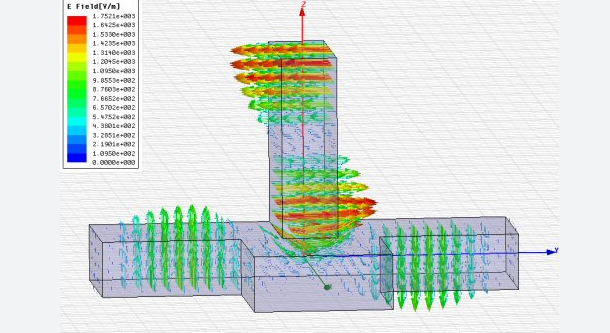
Deciphering the “Magic” in Magic Tee
The Magic Tee, an important piece in microwave engineering, distinguishes its “magic” by the maximum level to which it can perform a complex signal operation. The outstanding ability of the Magic Tee to combine and split signals and perform phase shift is the reason why it is used in such a wide variety of applications from radar to telecommunications. As described by Pozar , the distinguishing feature of the Magic Tee is its isolation effect: “It must be designed so that the signals at one arm of the tee are isolated from signals at the other arm” . It works in such a way that the signals are pure and do not interact with one another effectively. The signal at the E-arm is completely isolated from another signal at the H-arm. As described by Schwab and Schneider , this isolation can reach up to 30 dB depending on the design .
The Impact of Isolation
The isolation of the E-arm signal from H-arm grounds allows the Magic Tee device to enable a relatively high level of isolation between its ports. Indeed, as also described by Schwab and Schneider , the performance of the Tee is “specified in terms of the isolation between each pair of two ports” . This isolation is specifically maximized and helps to minimize crosstalk and other interference from the impact on one signal to another. The E-arm does not affect the H-arm signal in any way, and this is the ultimate feature of the Magic Tee.
Instruments in the E-arm and H-arm
The matching design applies to the internal structure of the Magic Tee . There are several instruments placed in the E-arm and H-arm. These instruments can be called to find out how and why they are used and how to match multiple instruments of the same kind. These instruments are used to measure insertion losses. These losses for the Magic Tee are up to 0.5 dB . The quality of materials installed in the E-arm and H-arm determines insertion losses partly. In the optimal variant, aluminum and brass are utilized. They have good electrical characteristics and can be shaped easily to match the design. These instruments may be placed either in the E-arm or in the H-arm. However, these two basic materials, in particular, define the whole design and the application in isotropic materials. The Magic Tee’s operation is defined by the conservation of power achieved through maintaining reciprocity . Powers are effectively managed in the devices and are not impacted or consumed in energy. However, the signals are balanced so that some signals combine, but this combination only involves a change of phase.
The Moniker “3dB Coupler” Explained
Introduction
The relevance of the term “3dB Coupler” is not limited just within a term that has been ascribed of art but present the direct very characteristic of the devise itself. The 3dB Coupler is a device employed in microwave engineering, which excels at separating an incoming signal into two assignments, each carrying half the power of the initial signal or comparable to the value of “3 dB”.
Explanation regarding Power Division and Phase Difference
Firstly, the most relevant characteristic of the 3dB Coupler is its capacity to split an output signal in two distinct assignments that an also be regarded to be precisely similar in their power value. The implemented power division in dual signals is imperative, since various balancing works require the power value to be distributed evenly.
Moreover, while basically a common splitter frequency coupler might seem functional, the “3dB” Can assure that each of the assigned outputs would be hosting exactly one-half of the input’s power value. In this way, serving in such capacity, the value also enables the capacity of the signal processing to be enhanced exponentially.
1.2 The Phase Interaction
The phase value is another aspect in case of the 3dB Coupler. The phase value holds that it is possible to introduce an exact difference in the value of the phase between the devised output assignments.
According to research, “For a 3-dB (or –3 dB) coupler designed to have matched 50-Ω ports, the coupled port has a nominal characteristic impedance of 50 Ω, but the input and the isolated port both have nominal characteristic impedances of 100 Ω” .
-
Understanding Scattering Parameters (S-parameters)
The scattering parameters, or S-parameters, are highly important in defining the performance of 3dB Couplers. They are used to establish how signals function and measure the data relative to reflection and transmission coefficients . As far as 3dB couplers are concerned, the ideal state is present when S21 and S31 are equal and indicate equal power division. S11 and S22 should be close to 0, meaning that reflection is at the minimum level and the device is highly efficient in regard to signal handling.
Implications for Device Performance
The device’s S-parameters show how effective it is in terms of signal division and how to affect the rest of the system’s performance. It is done to ensure minimal signal lost and distortion to guarantee the high performance of a 3dB coupler. Moreover, achieving a stable balance of scattering parameters is critical for the successful design of a microwave system, particularly those that demand high efficiency in signal distribution and propagation.
Implications for Signal Propagation and Isolation
Signal Propagation Efficiency
Signal propagation in a 3dB Coupler should be highly efficient as only such quality can provide for the low signal power lost during transfer and minimal distortion across other microwave system elements. Its high level allows ensuring that each port receives an equal portion of input power . Therefore, the efficiency of the signal distribution and propagation is key to achieving a given tool’s performance in a number of applications, from telecommunication to radar systems.
It can be seen that isolation is achieved between the input and isolated ports. This ensures that the reflected signals do not interfere with the input signal. High isolation levels ensure that the overall system remains stable and free from feedback loops and direct signal interference. The effectiveness of this 3 dB coupler is rooted in its sophisticated design and advanced principles of microwave engineering. Therefore, the device is capable of maintaining high isolation while splitting power effectively between the two interconnected ports.
This diagram focuses on the splitting of power and the maintenance of phase coherence and isolation. As such, it can be concluded that these characteristics require a rather sophisticated device and advanced microwave engineering principles. The device is effective at splitting power evenly between two circuits and maintaining sufficient isolation between them. In many ways, it is indicative of the complexities involved in the design of microwave components. The devices may be relatively simple but are necessary for the design of a sophisticated system that relies on the precise analysis of power and phase.
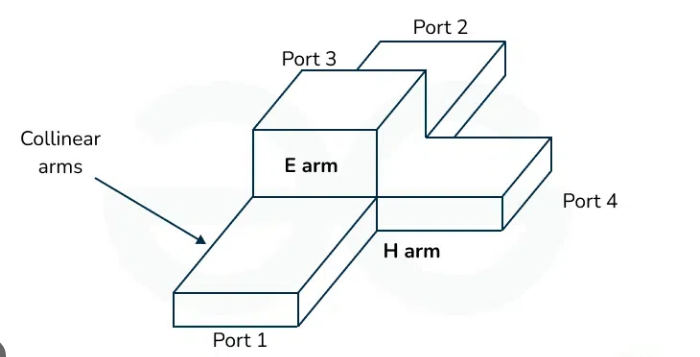
Practical Applications and Advantages
The 3 dB coupler is one of the most effective types of microwave components. It provides a number of benefits, such as the ability to maintain good signal integrity compared to other components. Couplers manage to achieve this by implementing signals and evenly distributing power. Such parts have turned out to be broadly used within radar systems in an attempt to enhance the signal reflection of display data. To measure the impedance of devices and machines, such couplers can be part of the impedance measurement tool . Besides, it is possible to make use of 3 dB couplers in duplexers to allow transmitting and receiving on the same antenna. At the same time, such components can prove useful for mixers to enable frequency conversion. As a result, the 3 dB coupler demonstrates better performance and has various applications within different areas, such as communications and signal processing.
Radar Systems and Impedance Measurement
Crucial for Servicing Systems
The 3 dB coupler is essential for radar systems because they can split and combine signals more accurately. The ability to distribute power and manage the signal’s phase provides better reflection of various objects and good signal processing. For example, the technique is useful for such parts of the radar system as display data. The signal reflects better, meaning that various objects of value can be recognized and tracked at bigger distances.
Measuring the Impedance
It is possible to make use of 3 dB couplers to measure the impedance of various elements and machines. The reflected signal is measured along with the transmitted one, and, in such a way, technicians can determine with high precision the impedance features of a machine. For example, by ensuring the impedance of a device matches the one in the system, it is possible to prevent signal losses due to incorrect reflection and processing.
Duplexers and Mixers in the Real World
Duplexers
In the real world, such tools as duplexers make it possible to transmit and receive signals through the same antenna. It is important for big systems, such as cellular base stations, where the use of one antenna for both operations is rather common. 3 dB couplers make it possible to enable such transmission and reception and ensure they do not impact each other.

